Neuroelectromagnetic forward head modeling toolbox
- PMID: 20457183
- PMCID: PMC4126205
- DOI: 10.1016/j.jneumeth.2010.04.031
Neuroelectromagnetic forward head modeling toolbox
Abstract
This paper introduces a Neuroelectromagnetic Forward Head Modeling Toolbox (NFT) running under MATLAB (The Mathworks, Inc.) for generating realistic head models from available data (MRI and/or electrode locations) and for computing numerical solutions for the forward problem of electromagnetic source imaging. The NFT includes tools for segmenting scalp, skull, cerebrospinal fluid (CSF) and brain tissues from T1-weighted magnetic resonance (MR) images. The Boundary Element Method (BEM) is used for the numerical solution of the forward problem. After extracting segmented tissue volumes, surface BEM meshes can be generated. When a subject MR image is not available, a template head model can be warped to measured electrode locations to obtain an individualized head model. Toolbox functions may be called either from a graphic user interface compatible with EEGLAB (http://sccn.ucsd.edu/eeglab), or from the MATLAB command line. Function help messages and a user tutorial are included. The toolbox is freely available under the GNU Public License for noncommercial use and open source development.
Copyright 2010 Elsevier B.V. All rights reserved.
Figures

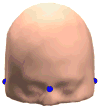
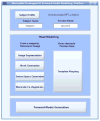

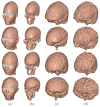

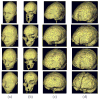



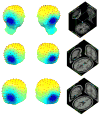
References
-
- Acar CE, Gençer NG. Forward problem solution of esi using FEM and BEM with quadratic isoparametric elements. Proc of IEEE EMBS Conf 1999 Sep;
-
- Akalin Acar Z. PhD Thesis. University of Middle East Technical University; Ankara: 2005. Electro-Magnetic Source Imaging Using Realistic Head Models.
-
- Akalin-Acar Z, Gençer NG. An advanced boundary element method (BEM) implementation for the forward problem of electromagnetic source imaging. Physics in Medicine and Biology. 2004;49:5011–5028. available at http://www.eee.metu.edu.tr/metu-fp/ - PubMed
-
- Akalin Acar Z, Makeig S. Neuroelectromagnetic forward modeling toolbox. Proc. of IEEE EMBC; Vancouver, CA: 2008. - PubMed
-
- Ataseven Y, Akalin-Acar Z, Acar CE, Gençer NG. Parallel implementation of the accelerated bem approach for emsi of the human brain. Med Biol Eng Comput. 2008;46:671–679. - PubMed
Publication types
MeSH terms
Grants and funding
LinkOut - more resources
Full Text Sources
Medical

